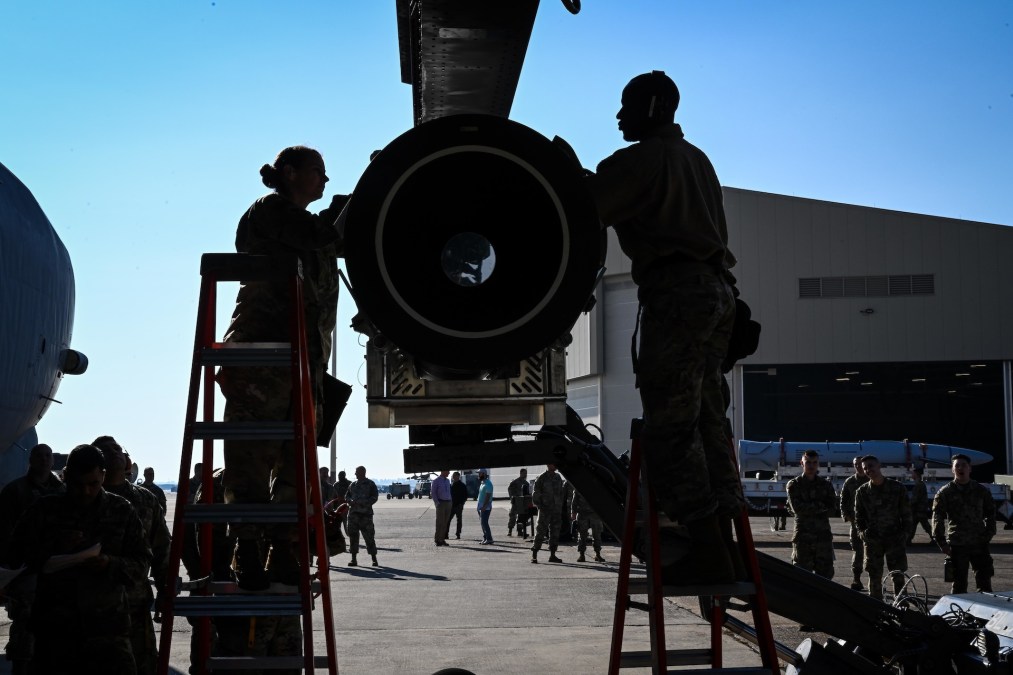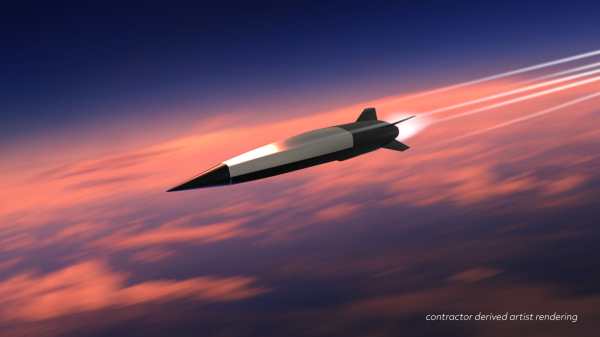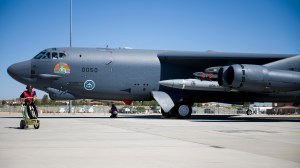Air Force revives ARRW hypersonic missile with procurement plans for fiscal 2026

The Air Force wants to spend $387.1 million in fiscal 2026 to acquire its first hypersonic missile known as the AGM-183A Air-Launched Rapid Response Weapon (ARRW), according to budget documents published Thursday.
While available documents did not detail how many ARRW missiles the Air Force intends to buy, the request officially transitions the hypersonic weapon from its troubled development and testing phase and into formal procurement and production. The move comes after the Air Force considered cancelling the program last year after it completed its rapid prototyping effort in August 2024.
Made by prime contractor Lockheed Martin, ARRW is one of the two types of hypersonic weapons the Air Force’s is pursuing — the other being the Hypersonic Attack Cruise Missile (HACM), under development by RTX-subsidiary Raytheon.
ARRW is a boost-glide missile that can be launched from larger aircraft such as the B-52 Stratofortress bomber, and like all hypersonics can fly at speeds of Mach 5 or faster and maneuver during flight.
The fate of ARRW has been up in the air since March 2024 when the Air Force announced it didn’t include any funds to procure the missiles in its budget request for fiscal 2025. The decision was not a surprise, as the program faced a series of setbacks during its development phase — including at least one failed all-up-round flight test that occurred in 2023.
At the time, Air Force leadership said they would pause the ARRW program to analyze the data gathered during its flight test campaign, while also shifting focus to the development of HACM.
But news that ARRW was no longer on the chopping block was first hinted at by Gen. David Allvin, the service’s chief of staff, earlier this month during a House Armed Services Committee hearing.
“I will tell you that we are developing — and you’ll see in the budget submission, assuming it’s what we put forward — two different programs. One is a larger form factor that is more strategic [and] long range that we have already tested several times — it’s called ARRW. The other is HACM,” Allvin told lawmakers June 5.
The Air Force first awarded Lockheed Martin a contract worth up to $480 million to design and develop ARRW. Since then, the service has spent roughly $1.4 billion in research-and-development funds on the hypersonic weapon.
As for HACM, the Air Force is requesting $802.8 million in fiscal 2026 to continue the missile’s development, according to budget documents. The service received $466.7 million in FY’25 appropriations, and the increase in funds for this year are likely due to the program entering its flight test phase in the near future.
The Air Force intends to conduct five flight tests for HACM — two less than the service originally planned for — before the program begins rapid fielding efforts in fiscal 2027. The reduction in tests was caused by delays in nailing down the weapon’s hardware design, according to a recent report from the Government Accountability Office.
Development of hypersonic missiles is considered a top priority for the Defense Department, especially as adversaries continue to advance their own weapons. Overall, the DOD is requesting over $3.9 billion in FY’26 across a number of programs at different stages of development, a defense official told reporters Thursday during a briefing at the Pentagon.
Along with the Air Force’s programs, those funds would also contribute to fielding the first operational battery of the Army’s Long Range Hypersonic Weapon (LRHW) — also known as Dark Eagle — by the end of FY’25 and continued development of the Navy’s Conventional Prompt Strike (CPS) system.






